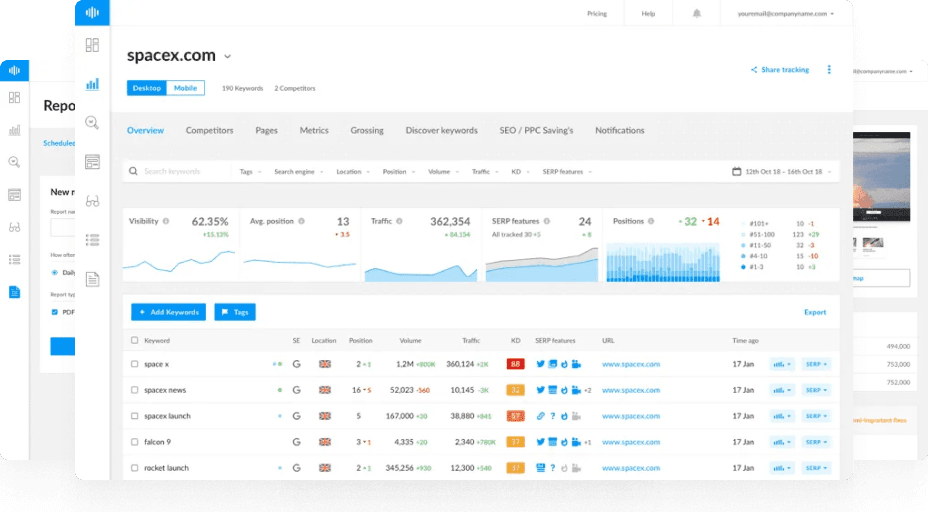What is the Things to Know SERP Feature?
Things to Know is a Google SERP feature that organizes and displays key insights, subtopics, and facts related to a search query. Powered by Google’s MUM (Multitask Unified Model) and Gemini AI, this feature helps users quickly explore complex topics by breaking them into structured, easily digestible parts.
For example, a search for “how to start a podcast” might trigger a “Things to Know” panel with sections such as:
- Choosing podcast equipment
- Recording and editing software
- Distributing your podcast
- Promoting on social media
Each section expands to show brief summaries and source links — giving users an at-a-glance understanding of the topic’s main components.
How Does “Things to Know” Work?
The feature uses semantic understanding and entity mapping to identify the most relevant and informative subtopics. Google’s algorithms evaluate thousands of documents to determine which information clusters represent the most useful breakdown of a topic.
The process includes:
- Query Interpretation: Google identifies whether a search term is exploratory (e.g., “how,” “what,” “why”) or informational.
- Topic Segmentation: AI models like MUM and Gemini divide the topic into related themes.
- Summary Generation: Concise explanations are generated from high-quality, authoritative sources.
- Attribution and Linking: Each segment includes a link to the original source or a related resource.
In essence, “Things to Know” acts as a topic map ��— giving users a guided tour through the most important aspects of a subject.
Why Is “Things to Know” Important for SEO?
The feature changes how content is discovered and prioritized in Google Search. Instead of ranking a single page for a single keyword, Google now identifies information clusters and subtopic coverage.
1. Broader Topic Visibility
Websites can appear multiple times across different “Things to Know” panels if they cover several subtopics comprehensively.
2. Reward for Depth and Structure
Pages that demonstrate topical authority — through internal linking, schema, and semantic completeness — are more likely to be selected.
3. Shift Toward Entity-Based Search
Google’s generative systems understand concepts, not just keywords. This means well-structured, entity-rich content performs better than shallow keyword repetition.
4. Enhanced CTR Opportunities
Even if your page doesn’t rank first, being featured in “Things to Know” can dramatically improve visibility and click-through rates.
How to Optimize for the “Things to Know” Feature
1. Create Comprehensive Topic Hubs
Build pillar pages that cover broad subjects, supported by cluster pages on specific subtopics. Use clear headings (H2, H3) and internal links to help Google recognize your site’s topical structure.
2. Use Semantic Keywords and Entities
Incorporate related phrases, synonyms, and entities to show topical relevance. Tools like Ranktracker’s Keyword Finder and SERP Checker can reveal which entities Google associates with your topic.
3. Structure Content Logically
Google favors content that reads like a step-by-step guide or explainer. Use numbered lists, FAQs, and short paragraphs that directly answer user questions.
4. Add Schema Markup
Implement structured data such as FAQPage, HowTo, or Article schema. This helps Google extract context and display snippets in “Things to Know.”
5. Focus on E-E-A-T
Ensure your content reflects Experience, Expertise, Authoritativeness, and Trustworthiness. Include author bios, credentials, and citations from reputable sources.
6. Monitor Emerging Topics
As “Things to Know” is dynamic, new subtopics appear as trends shift. Use Ranktracker’s SERP Volatility tool to identify emerging changes in your niche.
“Things to Know” vs Featured Snippets
| Feature | Things to Know | Featured Snippet |
|---|---|---|
| Purpose | To break down complex topics into subtopics | To answer a single, direct question |
| Content Type | Multi-section, exploratory | Single-paragraph or list summary |
| AI Model | MUM / Gemini | BERT / RankBrain |
| Visibility | Multiple source links | Single source citation |
| Best Content Type | Pillar + Cluster articles | FAQ-style responses |
Future of “Things to Know” in Search
“Things to Know” represents Google’s move toward topic-based search, where depth, structure, and semantic understanding outweigh keyword density. It’s a preview of how AI models like Gemini and MUM will shape discoverability in the coming years.
To stay competitive:
- Build semantic topic clusters instead of isolated blog posts.
- Use Ranktracker’s Top 100 Tracking to monitor keyword group performance.
- Continuously update your pages with new insights and data to stay relevant.
Summary
The “Things to Know” SERP feature is Google’s way of transforming static search into an interactive learning experience. For SEO professionals, success now depends on creating deeply structured, semantically rich content that serves as a true authority on every facet of a topic.
